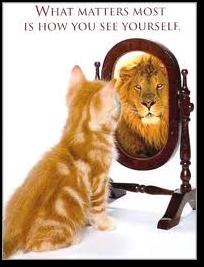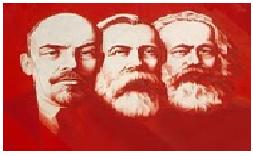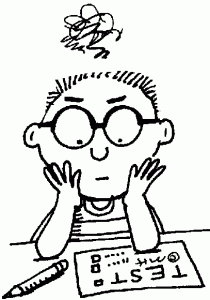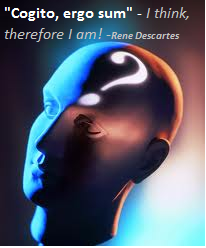 I tell you everything that is really nothing, and nothing of what is everything, do not be fooled by what I am saying. Please listen carefully and try to hear what I am not saying. ~Charles C. Finn
I tell you everything that is really nothing, and nothing of what is everything, do not be fooled by what I am saying. Please listen carefully and try to hear what I am not saying. ~Charles C. Finn
If the question “what is philosophy?” represents a vexing philosophical issue it should not come as a big surprise that it resists any attempt to be answered in a definitive manner. Philosophical issues and reflections are notorious for their inconclusiveness. This is particularly true of the question “what is philosophy?”. In fact, it is virtually impossible to give one universally accepted definition of philosophy. All philosophers will not agree even upon some general formal characteristics, for instance that philosophy is a discursive activity of our intellect. Widely circulated definitions of philosophy are either too general or too one-sided to be considered as anything better than useful hints about the character of philosophical thinking. In that respect philosophy is a unique discipline. No other subject in the curriculum has to agonize with a similar problem of an elusive self-definition
What is Philosophy?
In most languages there are words that are translated into English as ‘philosophy’ — in European languages, those words often share the same Greek roots as the English word. The activities to which such words refer have a history shared with philosophy, but at some point after Kant there was a parting of the ways. The activities referred to by `philosophy’ are different in various ways from the activities referred to by words like `philosophie’, `Philosophie’, `filosofia’, etc.
The derivation of the word “philosophy” from the Greek is suggested by the following words and word-fragments.
philo—love of, affinity for, liking of
philander—to engage in love affairs frivolously
philanthropy—love of mankind in general
philately—postage stamps hobby
phile—(as in “anglophile”) one having a love for
philology—having a liking for words
sophos—wisdom
sophist—lit. one who loves knowledge
sophomore—wise and moros—foolish; i.e. one who thinks he knows many things
sophisticated—one who is knowledgeable
B. A suggested definition for our beginning study is as follows.
Philosophy is the systematic inquiry into the principles and presuppositions of any field of study. From a psychological point of view, philosophy is an attitude, an approach, or a calling to answer or to ask, or even to comment upon certain peculiar problems (i.e., specifically the kinds of problems usually relegated to the main branches discussed below in Section II).
There is, perhaps, no one single sense of the word “philosophy.” Eventually many writers abandon the attempt to define philosophy and, instead, turn to the kinds of things philosophers do.
Philosophy is a persistent attempt to gain insight into the nature of the world and of ourselves by means of systematic reflection.
Philosophical Lexicon
Reflection = (from Latin: reflectere = bend back): the way of thinking which is “mirrored” back to itself; reflexive thinking is one that takes itself as an object of thought.
Contemplation = (from Latin: contemplari = gaze at attentively): activity of thinking, theoretical thinking.
Demonstration = (from Latin: de=from, monstrare = show): indirect knowledge based on the proof that clearly shows the inferences that lead to the conclusion.
Speculative = (from Latin: speculum = mirror): theoretical thinking that reflects the totality of objects involved. Speculation leads thinking from visible effects of a distant cause to the ultimate (first, most general) principles.
Equivocally = (from Latin: aequivocus = with equal voice, but different meaning):
speaking ambiguously, using one nominal designation (Latin: vox) for different things.
Univocally = (from Latin: unus vox, one voice) using one expression in only one sense, speaking unambiguously.
Scientistic = stemming from uncritical trust into sciences which are considered to cover the whole realm of sensible questions (don’t confuse with “scientific”!).
Pragmatistic = focused only to immediate useful consequences (from the Greek pragma, thing): to be distinguished from thepractical in the sense of ethical and political concerns (Greek praktikos, pertaining to human conduct).
Common sense = ordinary, everyday knowledge of ourselves and our surroundings.
Little questions = conventional questions that can be answered by relying on our common sense (what time is it?).
Big questions = questions that require systematic technical and scientific research (how did the ozone hole come into existence?).
Fundamental Questions = questions that make sense but cannot be answered by relying on common sense or scientific procedures (what is time?).
Difficulty in Defining Philosophy
History: Philosophy changes historically both in respect to its content and its character.. Thus we cannot find a definition of philosophy that would be both essential and sensitive to its historical variety.
Subject Matter: Philosophy does not have any specific subject matter and hence cannot be defined with regard to any particular area of investigation. It may deal with every dimension of human life and can raise questions in any field of Hence trying to tie philosophy exclusively to one or any specific sphere would be an unjustified limitation of its reach.
Questioning  hilosophy pursues questions rather than answers.. It is not an exaggeration to say that a philosopher is someone who can make a riddle out of any answer. Hence philosophy cannot be defined with recourse to some accepted tenets, beliefs and established class of propositions.
hilosophy pursues questions rather than answers.. It is not an exaggeration to say that a philosopher is someone who can make a riddle out of any answer. Hence philosophy cannot be defined with recourse to some accepted tenets, beliefs and established class of propositions.
“Philosophy,”Encyclopedia Britannica (Cambridge: Cambridge University Press, 1911) Vol. 21defines “Philosophy … has no other subject matter than the nature of the real world, as that world lies around us in everyday life, and lies open to observers on every side. But if this is so, it may be asked what function can remain for philosophy when every portion of the field is already lotted out and enclosed by specialists? Philosophy claims to be the science of the whole; but, if we get the knowledge of the parts from the different sciences, what is there left for philosophy to tell us? To this it is sufficient to answer generally that the synthesis of the parts is something more than that detailed knowledge of the parts in separation which is gained by the man of science. It is with the ultimate synthesis that philosophy concerns itself; it has to show that the subject-matter which we are all dealing with in detail really is a whole, consisting of articulated members.”.
Eastern Thought, has different forms ranging from Taoism to Zen-Buddhism and Transcendental Meditation; despite some practically oriented strains (Confucianism), it is mostly intuitive, directed toward the Self and introspection; its insights come from our inwardness that needs to be emptied from all external influences; the Self is meditative, with ready made precepts for the resolution of all life problems; this is why so many self-help books draw on this tradition; Eastern sage is balanced, poised, silent; his/her prototype is the Buddha. The findings of Eastern wisdom are not fully communicable which prevents it from being entirely discoursive and argumentative.
Despite many deserved attempts to integrate Eastern thought (primarily Indian and Chinese) into Western intellectual tradition the differences are so huge that it is advisable not to apply the same term “philosophy” (itself of Western origin) to both.
The Historical Periods of Philosophy
The question of who is a philosopher, who major, who minor — is itself a philosophical question, as well as an historical question. The following is only one of many possible lists, depending on the criteria used for inclusion and exclusion. The list below is based on what I was told at school, books I have studied over the years, and my own judgment.
Ancient or Greek Philosophy (c. 600-150 B.C.)
• Pre-Socratics: What is the unchanging reality that underlies reality’s changing appearances? Is it a “stuff” of some kind or is it a “form”?
• Answer: Stuff (physis)
• Thales of Miletus (fl. 585): water.
• Anaximander of Miletus (611-546): the boundless (apeiron).
• Anaximenes of Miletus (fl. c. 546): air (now rarefied or condensed).
• Heraclitus of Ephesus (fl. 500): “fire being kindled or fire going out”, in accordance with the Word (logos): “All things flow and nothing stands. You cannot step into the same river twice” (Crat. 401d, 402a); Cratylus (5th-4th century): flux is the only reality.
• Eleatics: Parmenides (fl. 500): despite the appearance of multiplicity (“the many”), reason demonstrates that there is only unity (“the one”); Zeno of Elea (fl. 460) (Paradoxes of Zeno).
• Empedocles of Acragas (484-424): attraction and repulsion of the four elements (earth, water, air, fire).
• Leucippus of Miletus (fl. c. 435); Democritus of Abdera (?460-357): atoms and the void.
• Anaxagoras of Clazomenae (500-428): mind, or, intellect or intelligence (nous), and matter in the vortex.
• Answer: Form: Pythagoras of Croton (b. Samos, c. 582): the first to call himself a “philosopher” or one who “seeks for truth” (Diog. L. viii, 8): numerical relationships: number.
• Others: Xenophanes (b. Colophon, c. 570): The gods are in no way similar to men, either in body or in thought (nor are they immoral, as Homer and Hesiod portray them); if animals had gods, they would make them in their own image, too. About some things mankind can have only opinions, and never will have knowledge. Diagoras of Melos (fl. 466), called “the atheist”, because the story is told that he denied the existence of gods after they failed to punish a man who had broken his oath; and he said there would be more votive offerings if these were set by up those whose prayers the gods hadnot answered.
• Classical Period (480-323 B.C.)
• Sophists (Apol. 19e):
• Protagoras of Abdera (c. 481-411): “Man is the measure of all things” (Crat. 386a). “As to the gods, I have no way of knowing whether or not they exist” (Theaet. 162d-e). The Athenian authorities burned his books in the marketplace as punishment for his presumed impiety.
• Gorgias of Leontini (485?-380?): “Those who speak in general terms [as if there were an essence of virtue] … are wrong. To enumerate the virtues, as Gorgias did, is much nearer the mark than to make this kind of [general] definition” (Aristotle Pol. 1260a25); a teacher of rhetoric.
• Prodicus of Ceos (born c. 470-460)
• Hippias of Elis (contemporary of Socrates)
• Thrasymachus (Plato, Republic, Book 1)
• Antiphon (Aristotle, Physics 193a9)
• Lycophron, student of Gorgias (ibid. 185b25)
• Socrates of Athens (469?-399); see Plato’s Apology;Xenophon’s Memorabilia.
• The Socratic Schools:
• Megarians (Euclides of Megara, c. 430-360)
• Antisthenes of Athens (c. 446-366): with Socrates, the impulse of the Cynic and Stoic Schools.
• Cyrenaics (Aristippus of Cyrene, c. 435-350)
• Plato of Athens (427-347): founded the “Old” Academy at Athens 386 B.C.; author of perhaps 28 dialogs and 13 letters.
• Aristotle of Stagira (384-322): founded Lyceum in 334 (He and his students were called “Peripatetics”, either because they walked while philosophizing or because of the covered walkway at their school). The Middle Ages regarded Aristotle as il maestro di color che sanno(“the master of those who know”, Dante).
• Theophrastus of Eresus (c. 370-286): Aristotle’s successor at the Lyceum.
• Cynics (Diogenes of Sinope, 404-323)
• Hellenistic Period
• Epicurus of Samos (341-270): founded the Garden school at Athens 306.
• Stoicism (Zeno of Citium, c. 344-261: founded school at the Stoa Poikile, or Painted Porch or Colonnade or Portico, at Athens 301)
• Skeptics (Pyrrho of Elis, c. 360-270): no positive knowledge is possible. Of the “Middle” and “New” Academy: Arcesilaus of Pitane (c. 315-240): more Socratic than Platonic; Carneades of Cyrene (c. 213-129): philosophy consists of mere opinions and criticism of opinions.
• Philosophy under Rome
• Stoics: Seneca (d. 65 A.D.), Marcus Aurelius (121-180),Epictetus (d. 130 A.D.)
• Lucretius (d. ca. 55 B.C.): On the Nature of Things
• Medieval Philosophy
• Plotinus (c. 205-270)
• St. Augustine of Hippo (354-430)
• Boethius (c. 480-524): The Consolation of Philosophy
• St. Anselm (1033-1109)
• Scholastic Theologians (“Schoolmen”); Scholasticism: “Faith seeking understanding” by using the tools of philosophy, which is the “handmaid of theology”: we can explore the “Mysteries of Faith” in a rational way.
• Albert Magnus (“Albert the Great”) (c. 1193-1280)
• Thomas Aquinas (c. 1225-1274)
• Bonaventure (1221-1274)
• Duns Scotus (1265-1308)
• Ockham (c. 1300-1349)
• Islamic world: Avicenna (980-1037), Averroes (1126-1198)
• Modern Philosophy [Renaissance: rediscovery of Greek and Latin classics, 14th-16th century] [The Reformation's rebellion against tradition, 16th century]
• [Montaigne 1533-1592 [Que sais-je?], Francis Bacon 1561-1626, Hobbes 1588-1697, Isaac Newton’s Principia 1687, Blaise Pascal 1623-1662)]
• The New Way of Ideas: “the direct object of perception is an idea in the mind”
• Descartes (1596-1650): Rationalism
Malebranche (1638-1715)
• Spinoza (1632-1677)
• Leibniz (1646-1716)
• Locke (1632-1704): Empiricism
• Berkeley (1685-1753) (early Idealism)
• Reid (1710-1796): “common sense”
• Hume (1711-1776)
• [Rousseau (1712-1778). Age of Enlightenment (Aufklärung): from Locke through Kant. Voltaire (1694-1778). Goethe (1749-1832)]
• Kant (1724-1804): “Critical philosophy”
• Fichte (1762-1814): Idealism
• [German Romantic Movement (1796-1822)]
• Schelling (1775-1854)
• Hegel (1770-1831)
• Schopenhauer (1788-1860)
• 19th Century Philosophy
• Bentham (1748-1832): “Utilitarianism”
• Nietzsche (1844-1900)
• [Kierkegaard (1813-1855)]
• Duthey (1833-1911)
• Comte (1798-1857): “Positivism”
• C. S. Peirce (1839-1914): “Pragmatism”
• F. H. Bradley (1846-1924)
• William James (1842-1910)
• Contemporary Philosophy (20th Century Philosophy)
• Husserl (1859-1938): “Phenomenology”
• Frege (1848-1925): Logicism
• Heidegger (1889-1976): “Existentialism”
• Bertrand Russell (1872-1970), Gilbert Ryle (1900-1976): “Analysis”
• Bergson (1859-1941)
• J. L. Austin (1911-1960)
• Vienna Circle (Moritz Schlick, 1882-1936): Logical Positivism
• G. E. Moore (1873-1958)
• Wittgenstein (1889-1951)
The Source of Philosophy
Philosophy starts with bewilderment, astonishment, amazement about the world, life, and ourselves. Philosophy arises from the workings of an inquisitive mind which is bewildered by seemingly common things or by those that appear to be entirely impractical. It emerges out of readiness to follow the call of human intellectual curiosity beyond common sense acquaintanceship with the world
Philosophy does not stay by pure bewilderment and amazement. Philosophers articulate their initial amazement by formulating questions (mostly what- and why-questions and what ought to be) that guide their curiosity toward comprehension of the problem. This does not mean that they seek a simple formula for all the puzzles of the world Philosophy aims at understanding and enlightenment rather than shorthand answers.
“The great virtue of philosophy is that it teaches not what to think, but how to think. It is the study of meaning, of the principles underlying conduct, thought and knowledge. The skills it hones are the ability to analyze, to question orthodoxies and to express things clearly. However arcane some philosophical texts may be … the ability to formulate questions and follow arguments is the essence of education.”
When we speak of philosophy we use a term, which may be viewed in two senses. The first of these is that of the word itself which literally means “ love of wisdom” .But to love wisdom does not necessarily make one a philosopher .Today, we think of philosophy in a more limited sense as man’s attempt to give meaning to his existence through the continued search for a comprehensive and consistent answer to basic problems .It is this second sense of the word which makes the philosopher an active person; one who seeks answers, rather than one who simply sits around engaging in idle and frivolous speculation. Today, most philosophers are actively concerned with life. THEY SEEK ANSWERS TO BASIC PROBLEMS. Thus we find that philosophers are doing as well as thinking, and it is their thinking which guides their doing .What they do is rooted in the search for answers to certain types of problems and the tentative answers they have formulated.
Philosophical Language: The capacity to understand and correctly apply fundamental philosophical concepts is of paramount importance in doing philosophy. A serious student must pay particular attention to philosophical terminology. One of the earliest and most persistent difficulties in doing philosophy is the complex language used by philosophers. Philosophers need to express thoughts that sometimes push the language beyond its limits, not because they like to be obscure, but because they consider new ideas and unusual aspects of reality. That is the reason why they often coin new terms or use already existing words in a new peculiar sense. Nominal familiarity with some expressions could be very deceptive. Looking up into philosophical dictionaries has, therefore, to become student’s regular habit. Among other things, philosophy is about words and their meanings.
The three great problems of philosophy are the problems of reality, knowledge, and value-
This way philosophy deals with three basic areas
.Area related with what aspect ,it is METAPHYSICS
.Area related with how aspect ,it is EPISTOMOLOGY,and
Area related with what ought to be aspect, it is AXIOLOGY.
(1)The problem of reality is this; What is the nature of the universe in which we live? Or ,in the last analysis, what is real ? The branch of philosophy which deals with this problem is termed as METAPHYSICS
Questions Asked in Metaphysics are
What is out there?
What is reality?
Does Free Will exist?
Is there such a process as cause and effect?
Do abstract concepts (like numbers) really exist?
(2) The problem of knowledge is this; How does a man know what is real? That is to say, how do we come by our knowledge and how can we be sure it is true, not error or illusion? The area of philosophy which is devoted to solving this problem is termed as EPISTOMOLOGY.
Fundamental Problems in Epistemology are
What can we know?
How can we know it?
Why do we know some things, but not others?
How do we acquire knowledge?
Is knowledge possible?
Can knowledge be certain?
How can we differentiate truth from falsehood?
Why do we believe certain claims and not others?
(3 )The problem of value ,is this ;What are the important values which are to be desired in living? Are these values rooted in reality? And how can they be realized in our experience? The branch of philosophy dealing with such questions are these is named AXIOLOGY . Axiology, then is the subject area which tries to answer problems like these:
•How are values related to interest, desire, will, experience, and means-to-end?
•How do different kinds of value interrelate?
•Can the distinction between intrinsic and instrumental values be maintained?
•Are values ultimately rationally or objectively based?
•What is the difference between a matter of fact and a matter of value?
(4) Most closely related to epistemology, is another branch of philosophy which deals with the exact relating of ideas.This area of philosophy is commonly referred to as the science of LOGIC.
Metaphysics (Ontology):
(2) Metaphysics or Ontology (theory of reality): the inquiry into what is real as opposed to what is appearance, either conceived as that which the methods of science presuppose, or that with which the methods of science are concerned; the inquiry into the first principles of nature; the study of the most fundamental generalizations as to what exists. : the study of what is really real. Metaphysics deals with the so-called first principles of the natural order and “the ultimate generalizations available to the human intellect.” Specifically, ontology seeks to indentify and establish the relationships between the categories, if any, of the types of existent things
Metaphysics-Meta means above; this is the study of the nature of things above physics.(What comes after Physics) Metaphysics covers the kinds of things most people probably think of if asked what philosophy covers e.g. those ‘big questions’, such as, is there God, why are we here, what is the ultimate nature of the universe, and so on. Another important area of metaphysics is the nature of substance, that is, what is the universe really made of,
Metaphysics (derived from the Greek words “ta meta ta physika biblia”) – meaning ‘the book that follows the physics book’. It was the way students referred to a specific book in the works of Aristotle, and it was a book on First Philosophy. (The assumption that the word means “beyond physics” is misleading) Metaphysics is the branch of philosophy concerned with the study of “first principles” and “being” (ontology). In other words, Metaphysics is the study of the most general aspects of reality, such as substance, identity, the nature of the mind, and free will.
: Metaphysics is the branch of philosophy that goes beyond the realms of science. It is concerned with answering the questions about identity and the world. The name is derived from the Greek words, Meta which means beyond or after, and Physika which means physics. Aristotle, one of the most well-known philosophers, acknowledged Thales as the first known meta physician. The main branches of metaphysics are ontology, natural theology and universal science.
In Western philosophy, metaphysics has become the study of the fundamental nature of all reality — what is it, why is it, and how are we can understand it. Some treat metaphysics as the study of “higher” reality or the “invisible” nature behind everything, but that isn’t true. It is, instead, the study of all of reality, visible and invisible; and what constitutes reality, natural and supernatural. Because most of the debates between atheists and theists involve disagreements over the nature of reality and the existence of anything supernatural, the debates are often disagreements over metaphysics.
In popular parlance, metaphysics has become the label for the study of things which transcend the natural world — that is, things which supposedly exist separately from nature and which have a more intrinsic reality than our natural existence. This assigns a sense to the Greek prefix meta which it did not originally have, but words do change over time. As a result, the popular sense of metaphysics has been the study of any question about reality which cannot be answered by scientific observation and experimentation. For atheists, this sense of metaphysics is usually regarded as literally empty
Because atheists typically dismiss the existence of the supernatural, they may dismiss metaphysics as the pointless study of nothing. Because metaphysics is technically the study of all reality, and thus whether there is any supernatural element to it at all, in truth metaphysics is probably the most fundamental subject which irreligious atheists should focus on. Our ability to understand what reality is, what it is composed of, what “existence” means, etc., is fundamental to most of the disagreements between irreligious atheists and religious theists.
Some irreligious atheists, like logical positivists, have argued that the agenda of metaphysics is largely pointless and can’t accomplish anything. According to them, metaphysical statements cannot be either true or false — as a result, they don’t really carry any meaning and shouldn’t be given any serious consideration. There is some justification to this position, but it is unlikely to convince or impress religious theists for whom metaphysical claims constitute some of the most important parts of their lives. Thus the ability to address and critique such claims can be important.
The only thing all atheists have in common is disbelief in gods, so the only thing all atheist metaphysics will have in common is that reality doesn’t include any gods and isn’t divinely created. Despite that, most atheists in the West tend to adopt a materialistic perspective on reality. This means that they regard the nature of our reality and the universe as consisting of matter and energy. Everything is natural; nothing is supernatural. There are no supernatural beings, realms, or planes of existence. All cause and effect proceeds via natural laws.
Branches of Metaphysics:
Aristotle’s book on metaphysics was divided into three sections: ontology, theology, and universal science. Because of this, those are the three traditional branches of metaphysical inquiry.
Ontology is the branch of philosophy which deals with the study of the nature of reality: what is it, how many “realities” are there, what are its properties, etc. The word is derived from the Greek terms on, which means “reality” and logos, which means “study of.” Atheists generally believe that there is a single reality which is material and natural in nature.
Theology, of course, is the study of gods — does a god exist, what a god is, what a god wants, etc. Every religion has its own theology because its study of gods, if it includes any gods, will proceed from specific doctrines and traditions which vary from one religion to the next. Since atheists don’t accept the existence of any gods, they don’t accept that theology is the study of anything real. At most, it might be the study of what people think is real and atheist involvement in theology proceeds more from the perspective of a critical outsider rather than an involved member.
The branch of “universal science” is a bit harder to understand, but it involves the search for “first principles” — things like the origin of the universe, fundamental laws of logic and reasoning, etc. For theists, the answer to this is almost always “god” and, moreover, they tend to argue that there can be no other possible answer. Some even go far as to argue that the existence of things like logic and the universe constitute evidence of the existence of their god
Metaphysics Theories of the nature of reality-
A .Cosmology. Theories of the nature of the cosmos and explanations of its origin and development. It deals with the origin and structure of the universe. It accepts the principles of science and attempts to find the principles of existence ,in whatever form They may take.
Some considerations in cosmology are
a . Causality. The nature of cause and effect relationship ,
the nature of time and
the nature of space..
There are two distinctive views in cosmology
a Evolutionism .universe evolved by itself.
b. .Creationism. The universe came to be as the result of the working of a Creative cause or Personality.
B.The nature of man as one important aspect of Reality.The problem of essential nature of the self. There are no particular terms but there are divergent answers which can be identified with general viewpoints.
a. The self is a soul, a spiritual being. A principle of idealism and spiritual realism.
b. The self is essentially the same as the body. A principle of naturalism and physical realism
c. The self is a social-vocal phenomenon. A principle held especially by experimentalists
2. The problem of the relation of body and mind.
a. Interactionism. Mind and body are 2 different kind of reality, each of which can affect the other.
B. Parallelism. Mind and body are two different kinds of reality which do not and cannot affect each other. But in some unknown way, every mental event is paralleled by a corresponding physical event.
c. Epiphenomenalism. Mind is merely a function of the brain, an overtone accompanying bodily activity. It is an onlooker at events, never influencing them.
d. Double Aspect Theory. Mind and body are two aspects of a fundamental reality whose nature is unknown.
e. Emergence Theory. Mind is something new which has been produced by Nature in the evolutionary process, neither identical with body, parallel to it, nor wholly dependent upon it.
f. Spiritualism. (A definition common to most idealists and spiritual realists.) Mind is more fundamental than body. The relation of body and mind is better described as body depending upon mind, as compared to the common-sense description according to which mind depends upon body.
3. The problem of freedom
a. Determinism. Man is not free. All of his actions are determined by forces greater than he is.
b. Free Will. Man has the power of choice and is capable of genuine initiative.
c. There is a third alternative proposed especially by the experimentalists, for which there is no name. Man is neither free nor determined; but he can and does delay some of his responses long enough to reconstruct a total response, not completely automatic but not free, which does give a new direction to subsequent activity.
C. Conception of and about God.
1.Atheism. There is no ultimate reality in or behind the cosmos which is Person or Spirit.
2.Deism. God exists quite apart from, and is disinterested in, the physical universe and human beings. But He created both and is the Author of all natural and moral law.
3.Pantheism. All is God and God is all. The cosmos and God are identical.
4.The conception of God as emerging, for which there is no common name. God is evolving with the cosmos; He is the end toward which it is moving, instead of the beginning from which it came.
5.Polytheism. Spiritual reality is plural rather than a unity. Thee is more than one God.
6.Theism. Ultimate reality is a personal God who is more than the cosmos but within whom and through the cosmos exists.
D. Teleology. Considerations as to whether or not there is purpose in the universe.
1.Philosophies holding that the world is what it is because of chance, accident, or blind mechanism are no teleological.
2.Philosophies holding that there has been purpose in the universe from its beginning, and /or purpose can be discerned in history, are teleological philosophies.
3.It may be that a special case must be made of the experimentalists again on this particular question, as they do not find purpose inherent in the cosmos but by purposeful activity seek to impose purpose upon it.
E. Considerations relating to the constancy, or lack of it, in reality.
1.Absolutism. Fundamental reality is constant, unchanging, fixed, and dependable.
2.Relativism. Reality is a changing thing. So called realities are always relative to something or other.
F. Problems of quantity. Consideration of the number of ultimate realities, Apart from qualitative aspects.
1.Monism. Reality is unified. It is one. It is mind, or matter, or energy, or will but only one of these.
2.Dualism. Reality is two. Usually these realities are antithetical, as spirit and matter, good and evil. Commonly, the antithesis is weighted, so that one of the two is considered more important and more enduring than the other.
3.Pluralism. Reality is many. Minds, things, materials, energies, laws, processes, etc., all may be considered equally real and to some degree independent of each other.
G. Ontology. The meaning of existence as such. To exist, to have being, means what?
1.Space-time or Nature as identical with existence. To exist means to occupy time and space, to be matter or physical energy. (e.g., naturalism and physical realism).
2.Spirit or God as identical with existence. To exist means to be Mind or Spirit, or to be dependent upon Mind or Spirit. (Especially true of idealism.)
3.Existence as a category which is not valid. This is held by those, especially the pragmatists, who insist that everything is flux or change and there is nothing which fits into the category of existence in any ultimate sense.
Epistemology
Epistemology, from the Greek words episteme (knowledge) and logos (word/speech) is the branch of philosophy that deals with the nature, origin, and scope of knowledge.
A branch of philosophy dealing with the nature of knowledge .theory of knowledge: the inquiry into what knowledge is, what can be known, and what lies beyond our understanding; the investigation into the origin, structure, methods, and validity of justification and knowledge; the study of the interrelation of reason, truth, and experience. Epistemology investigates the origin, structure, methods, and integrity of knowledge. The study of knowledge. In particular, epistemology is the study of the nature, scope, and limits of human knowledge
It deals with the definition of knowledge and its scope and limitations. It translates from Greek to mean ‘theory of knowledge’. It questions the meaning of knowledge, how we obtain knowledge, how much do we know and how do we have this knowledge? Some of the famous epistemologists are Descartes, Kant and Hume.
Kinds of knowledge
As Epistemology is the investigation into the grounds and nature of knowledge itself. The study of epistemology focuses on our means for acquiring knowledge and how we can differentiate between truth and falsehood. knowledge can be acquired
Priori it is possible to know things before we have had experiences — this is known as a priori knowledge because priori means before. It includes Independent of the knowledge of experience. Belonging to the mind prior to experience. This term is usually applied to principles or judgments whose validity is independent of sense data Knowledge which is self-evident. Principles which, when once understood, are recognized to be true and do not require proof through observation, experience, or experiment.)
Posteriori: we can only know things after we have had the relevant experience — this is labeled a posteriori knowledge because posteriori means “after.”It includes (Inductive thinking beginning with the data of experience opposed to a priori)Knowledge which is based upon experience and observation
Experimental knowledge- It is something to be put to work in experience as a function which carries experience forward satisfactorily.
The Theories of the nature of knowledge-The theories deals with the possibility of knowledge.
Agnosticism is the doctrine that holds tha one can not know the existence of anything beyond the phenomenon of experience, it may mean no more than the suspension of judgment on ultimate questions because of insufficient evidence, or it may constitute a rejection of traditional religious tenets. The position that conclusive knowledge of ultimate reality is an impossibility.
Skepticism- Philosophical doubting of knowledge claims in various areas ,a challenge to accepted views in science ,morals, and religion. A questioning attitude toward the possibility of having any knowledge.
The affirmation of knowledge. The position that true knowledge of ultimate reality is possible,
The affirmation of functional knowledge. The position that knowledge is always fractional, never total , and functions in a present field or situation where it is needed, and that we can appropriate such fractional and functional knowledge.
The Instruments of Knowledge
Epistemology is important because it is fundamental to how we think. Without some means of understanding how we acquire knowledge, how we rely upon our senses, and how we develop concepts in our minds, we have no coherent path for our thinking. A sound epistemology is necessary for the existence of sound thinking and reasoning — this is why so much philosophical literature can involve seemingly arcane discussions about the nature of knowledge.
Empiricism: knowledge is obtained through experience.The position, or sense-perceptual experience, is the medium through which knowledge is gained. Empiricism, , is more uniform in the sense that it denies that any form of rationalism is true or possible. Empiricists may disagree on just how we acquire knowledge through experience and in what sense our experiences give us access to outside reality; nevertheless, they all agree that knowledge about reality requires experience and interaction with reality
Rationalism: knowledge can be acquired through the use of reason.The position that reason is the chief source of knowledge. Rationalism is not a uniform position. Some rationalists will simply argue that some truths about reality can be discovered through pure reason and thought (examples include truths of mathematics, geometry and sometimes morality) while other truths do require experience. Other rationalists will go further and argue that all truths about reality must in some way be acquired through reason, normally because our sense organs are unable to directly experience outside reality at all.
Intuitionism-A position that knowledge is gained through immediate insight and awareness .Direct or immediate knowledge of self , others ,or data.An internal, personal phenomenon.
Autoritarionism-The position that much important knowledge is certified to us by an indisputable authority
Reveleation –T he position that God presently reveals himself in the holy books or holy places. A communication of God,s will to man from some external source
Logic: Logic (from Classical Greek λόγος (logos), originally meaning the word, or what is spoken, but coming to mean thought or reason) is most often said to be the study of arguments, although the exact definition of logic is a matter of controversy amongst philosophers (see below). However the subject is grounded, the task of the logician is the same: to advance an account of valid and fallacious inference to allow one to distinguish good from bad arguments.
The study of the proper methods of thinking and reasoning. Logic languages, like Predicate Logic, promise to produce arguments which, if the premises are true, can only lead to true conclusions. Logic is slightly different than the other branches as it aims to suggest the correct ways of studying philosophy in general.
Logic is the science of exact thought. The .The systematic treatment of the relation of ideas. A study of methods distinguishing valid thinking which is fallacious. : Among the branches of philosophy, logic is concerned with the various forms of reasoning and arriving at genuine conclusions. It includes the system of statements and arguments. It is now divided into mathematical logic and philosophical logic. It tries to avoid the imaginary or assumptions without real logical proof.
A.Induction. Reasoning from particulars to a general conclusion.
B.Deduction. Reasoning from general principle to particulars included within the scope of that principle.
C.The syllogism. A form in which to cast deductive reasoning. It is comprised of three propositions : the major premise, the minor premise, and the conclusion.
D.Experimental reasoning or problem-solving. A form of reasoning, largely inductive but using deduction as well, which begins wigh a problem observes all the data relating to the problem, formulates hypotheses and tests them to reach a workable solution of the problem.
E.Dialectic. A method of reasoning of reasoning in which the conflict or contrast of ideas is utilized as a means of detecting the truth. In hegel’s formulation of it there are three stages: thesis, antithesis, and synthesis.
Axiology: the Study of Value: the study of value; the investigation of its nature, criteria, and metaphysical status. More often than not, the term “value theory” is used instead of “axiology” in contemporary discussions even though the term “theory of value” is used with respect to the value or price of goods and services in economics. . The general theory of value. The nature of values, the different kinds of value, specific values worthy of possession
Axiology (theory of value): the inquiry into the nature, criteria, and metaphysical status of value. Axiology, in turn, is divided into two main parts: ethics and æsthetics.
Although the term “axiology” is not widely used outside of philosophy, the problems of axiology include
(1) how values are experienced,
(2) the kinds of value,
(3) the standards of value, and
(4) in what sense values can be said to exist.
A. The nature of value.
1.The interest theory. Values depend upon the interest of the person who enjoys them. Strictly speaking, they do not exist but are supported by the interest of the value.
2.The existence theory. Values have an existence in their own right which is independent of the valuer and his interest. Values are not qualities or essences without foundation in existence; they are essence plus existence.
3.The experimentalist theory. That is of value which yields a greater sense of happiness in the present and at the same time opens the way to further goods in future experiences.
4.The part whole theory. The key to realizing and enjoying value is the effective relating of parts to wholes.
B. Realms of value.
1. Ethics. : Ethics is a general term for what is often described as the “science (study) of morality”. In philosophy, ethical behavior is that which is “good” or “right.” The Western tradition of ethics is sometimes called moral philosophy.
It is concerned with questions on morality and values and how they apply to various situations. It can be divided into the branches of meta-ethics, normative and applied ethics. Ethics seeks to understand the basis of morals, how they develop and how they are and should be followed. Famous works on ethics are by philosophers as early as Plato, Aristotle, Kant and Nietzsche.
The study of values in human behavior or the study of moral problems: e.g., (1) the rightness and wrongness of actions, (2) the kinds of things which are good or desirable, and (3) whether actions are blameworthy or praiseworthy The nature of good and evil. The problems of conduct and ultimate objectives.
a. The worth of living.
1.Optimism. Existence is good. Life is worth living. Our outlook can be hopeful.
2.Pessimism. Existence is evil. Life is not worth the struggle; we should escape it by some means.
3.Meliorism. Conclusions as to the goodness or evil of existence cannot be made final. Human effort may improve the human situation. The final end cannot be assured, but we must face life, not escape it, applying all the effort and resource we can command.
B. The highest good or summum bonum. The end, aim, or objective of living which is above all other ends. In absolutist philosophies it is the ultimate end which by its nature cannot be a means to another end.
1.Hedonism. The highest good is pleasure. Hedonist ranging from the intense pleasure of the moment to highly refined and enduring pleasure or contentment. Utilitarianism is a form of hedonism having society as its frame of reference. According to it, the greatest happiness of the greatest number is the prime objective.
2.Perfectionism. The highest good is the perfection of the self, or self-realization. Perfection of the self, or self realization. Perfectionism may also have its social frame of reference, envisioning and ideal social order as the ultimate objective of society.
C. The criteria of conduct. From one’s conception of the highest good there follow logically certain practical principles for everyday living. Some examples are
1.Kant’s maxim: act only on those principles which you are willing should become universal moral laws.
2.Spencer’s principal: action to be right must be conducive to self-preservation.
3.Dewey’s principle: discover the probable consequences of what you consider doing, by going through an imaginative rehearsal of the possibilities.
4.The religious principle: obey the will of God; commit yourself completely to the fulfillment of God’s purpose for yourself and the world.
D. The motivation of conduct. The kind and scope of the interests which guide conduct.
1.Egoism. The interests of self should be served by an individual’s actions.
2.Altruism. The interest of other or of the social group should be served by an individual’s actions. One realizes his won fullest selfhood in seeking the best interests of others.
3.Religious Values. The kind, nature, and worth of values to be possessed in worship, religious experience, and religious service.
4.Educational Values. The kind, nature and worth of values inherent in the educative process.
5.Social Values. The kind, nature and worth of values only realized in community and in the individual’s relation to society. Some more specific kinds of social values are the political and the economic
6.Utilitarian Values. The kind, nature, and worth of values to be realized in harmonious adjustment to or efficient control of the forces of the physical environment.
There are two main subdivisions of axiology: ethics and æsthetics.. Each of these subdivisions are briefly characterized below.
Aesthetics:The philosophy of art. Concerned with questions like why do we find certain things beautiful, what makes things great art, so on. the study of value in the arts or the inquiry into feelings, judgments, or standards of beauty and related concepts. Philosophy of art is concerned with judgments of sense, taste, and emotion.
Aesthetics deals with sense, perception and appreciation of beauty. It broadly includes everything to do with appreciating of art, culture and nature. It also examines how the perception of beauty is determined by taste and aesthetic judgment. The practice of defining, criticizing and appreciating art and art forms is based on aesthetics.
Aesthetics involves the conceptual problems associated with the describing the relationships among our feelings and senses with respect to the experience of art and nature .It is the inquiry into feelings, judgments, or standards concerning the nature of beauty and related concepts such as the tragic, the sublime, or the moving—especially in the arts; the analysis of the values of sensory experience and the associated feelings or attitudes in art and nature; the theories developed in les beaux arts.
Actually Aesthetics deals with the nature of the values which are found in the feeling aspects of experience. The conscious search for the principles governing the creation and appreciation of beautiful things.
(b) Ethics: This is probably the most self-explanatory of all the branches. Concerned with such things as what is good/evil, is there such a thing as objective morals or are they created by us, or some other being, how we should live our lives, and so on.. Ethics involves the theoretical study of the moral valuation of human action—it’s not just concerned with the study of principles of conduct .It is the inquiry into the nature and concepts of morality, including the important problems of good, right, duty, virtue, and choice; the study of the principles of living well and doing well as a human being; the moral principles implicit in mores, religion, or philosophy.
References
Brameld, Theodore, Philosophies of Education in Cultural Perspective. New York: Dryden Press, 1956.
Butler, J.Donald, Four Philosophies and Their Practice in Education and Religion. New York: Harper & Row, Publishers, 1957.
Cotter, A.C. ABC of Scholastic Philosophy. Weston, Massachusetts: Weston College Press, 1949
McGucken, William, “The Philosophy of Catholic Education,” Philosophies of Education. National Society for the Study of Education, Forty-first yearbook, Part I Chicago: University of Chicago Press 1942.
Maritain, Jacques,” Thomist views on Education,” Modern Philosophies of Education. National Society for the Study of Education, Fifty-Fourth yearbook, Part I. Chicago: University of Chicago Press, 1955.
Morries, Van Cleve, Philosophy and the American School. Cambridge, Mass.: Riverside Press, 1961.
Weber, Christian O., Basic Philosophies of Education. New York : Holt, Rinehart and Winston, Inc., 1960. This book, especially in chapters 11-14,.
Wild, John, “Education and human Society : A Realistic View,” Modern Philosophies and Education. National Society for the study of Education, Fifty-fourth Yearbook, Part I. Chicago : University of Chicago Press, 1955.
Broudy, Harry S., Building a Philosophy of Education. Englewood Cliffs, N.J. Prentice-Hall, Inc., 1961..
.Frank Thilly, “A History of philosophy”, Central Publishing House, Allahabad.
John Dewey, “Reconstruction in Philosophy,” p-38. London, University of London Press Ltd. 1921.
Rusk, R.R., “Philosophical Basis of Education” p-68, footnote, London, University of London Press, 1956.
 Confucius represented his teachings as lessons transmitted from antiquity. He claimed that he was “a transmitter and not a maker” and that all he did reflected his “reliance on and love for the ancients.” (Lunyu 7.1)
Confucius represented his teachings as lessons transmitted from antiquity. He claimed that he was “a transmitter and not a maker” and that all he did reflected his “reliance on and love for the ancients.” (Lunyu 7.1)



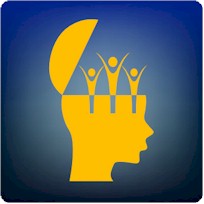 Teaching is not primarily telling. It’s helping other people learn. That means the focus is on the learners, not the teacher. People learn best through experiencing something themselves, so when you are striving to teach something, you are constantly trying to Get into the shoes of the learners so that you can better understand where they are and what they need from you to learn the subject understudy.
Teaching is not primarily telling. It’s helping other people learn. That means the focus is on the learners, not the teacher. People learn best through experiencing something themselves, so when you are striving to teach something, you are constantly trying to Get into the shoes of the learners so that you can better understand where they are and what they need from you to learn the subject understudy.
